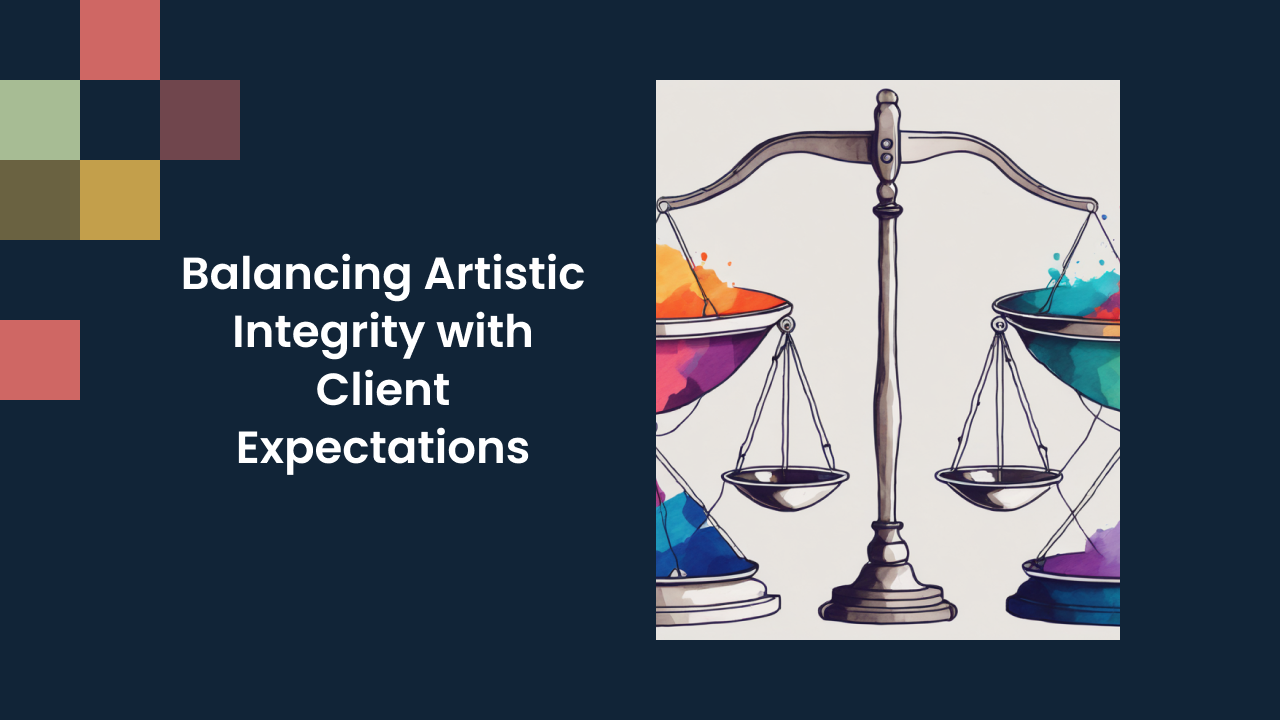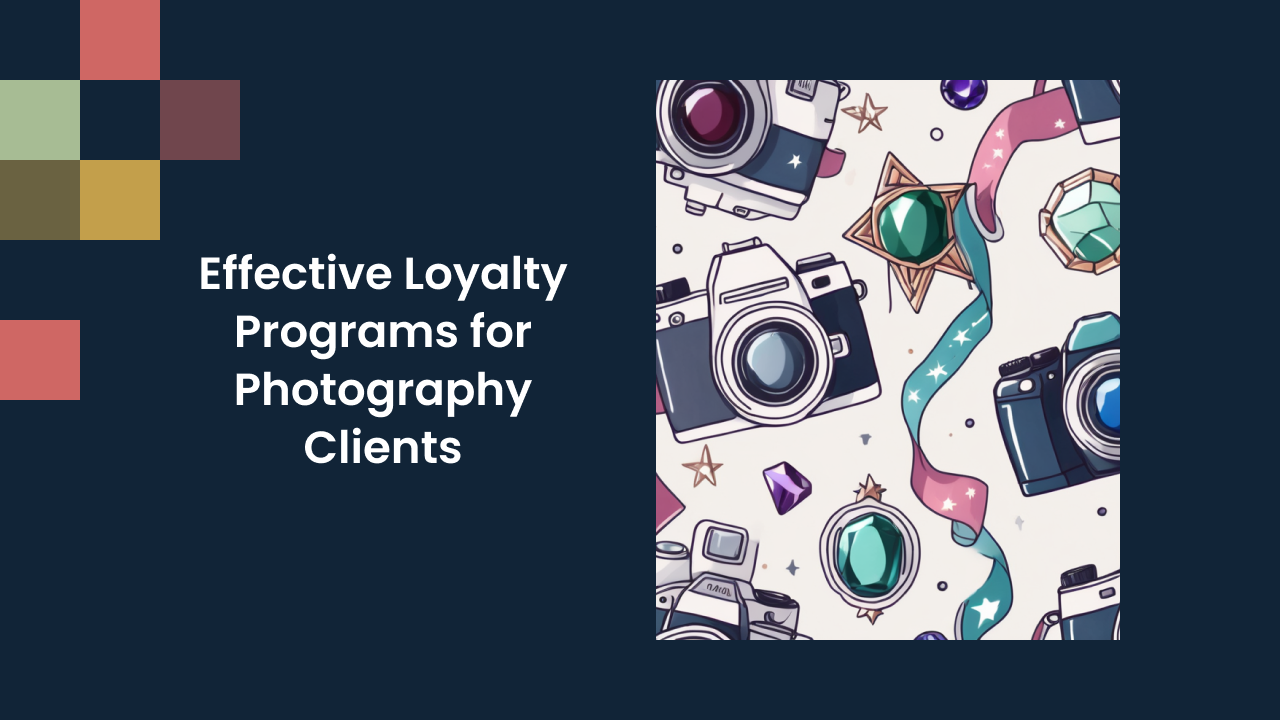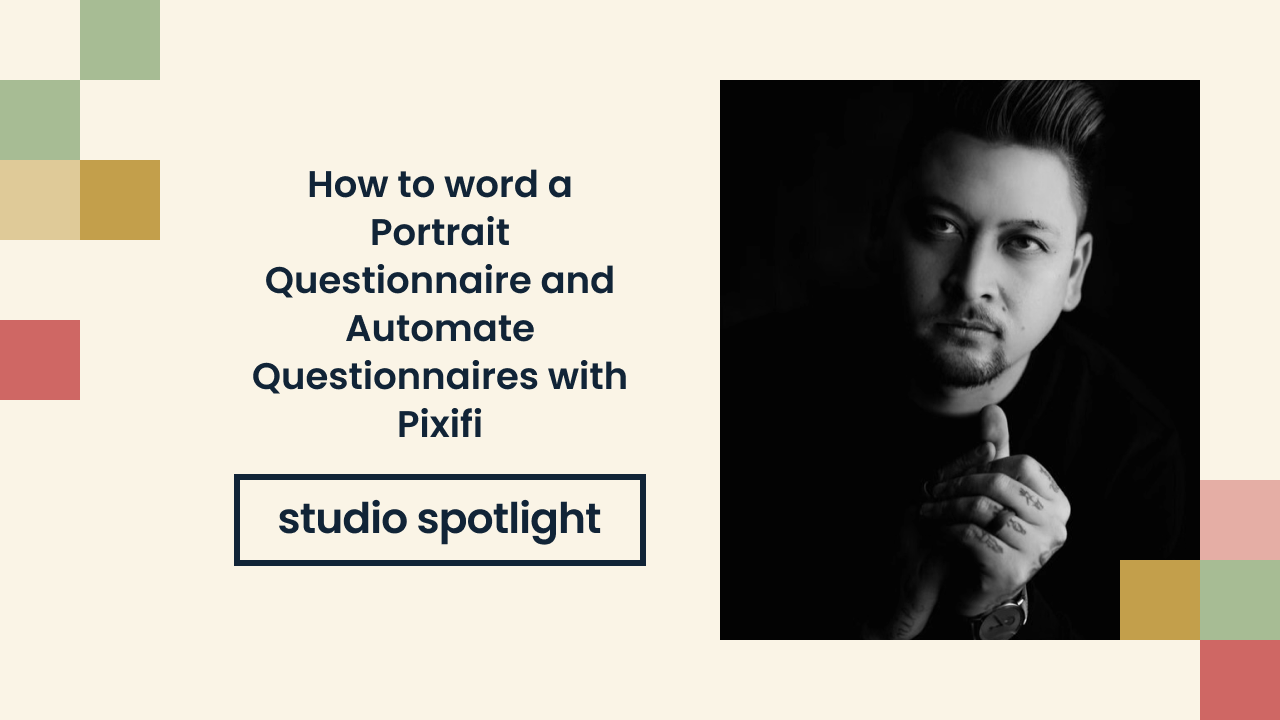Balancing Artistic Integrity with Client Expectations
Artists and creatives often find themselves faced with a challenge: how to balance their artistic integrity with the expectations of their clients. It's a delicate dance that requires skill, tact, and a deep understanding of both sides. In this article, we will explore the concept of artistic integrity, the role of client expectations, and strategies for achieving a harmonious balance.
Understanding Artistic Integrity
Before diving into the complexities of balancing artistic integrity and client expectations, it's important to establish a clear understanding of what artistic integrity actually means.
Artistic integrity goes beyond just following one's artistic vision; it is a deep-rooted commitment to honesty, transparency, and authenticity in the creative process. It involves staying true to one's values and principles, even when faced with external pressures or temptations to compromise.
Defining Artistic Integrity
Artistic integrity refers to an artist's commitment to staying true to their artistic vision, values, and principles. It encompasses the authenticity, originality, and creative voice that an artist brings to their work.
Furthermore, artistic integrity extends to the artist's interactions with their audience and peers. It involves fostering open communication, respecting diverse perspectives, and being receptive to constructive feedback while staying true to one's artistic identity.
The Importance of Maintaining Artistic Integrity
Artistic integrity is essential for artists because it allows them to create work that is a genuine reflection of their unique perspective and talents. It sets them apart from others and helps build a strong personal brand.
Moreover, maintaining artistic integrity fosters trust and credibility with audiences, as they can rely on the artist to deliver work that is sincere and meaningful. It also serves as a source of inspiration for aspiring artists, encouraging them to prioritize authenticity and creativity in their own endeavors.
However, maintaining artistic integrity is not always easy, especially when confronted with client expectations that may challenge or contradict their vision.
When faced with such challenges, artists must navigate a delicate balance between honoring their creative convictions and meeting the needs of their clients. This requires effective communication, negotiation, and a willingness to find common ground without compromising the essence of their artistic expression.
The Role of Client Expectations
Clients play a crucial role in the creative process. They are the ones who commission the work, provide feedback, and ultimately determine the success of a project. Understanding their expectations is vital for achieving a successful collaboration.
Client expectations are often shaped by a variety of factors, including their past experiences, industry standards, and personal preferences. By delving deeper into these influences, artists can gain valuable insights that will help them tailor their work to meet and exceed client expectations.
Moreover, establishing a strong rapport with clients can lead to long-lasting relationships built on trust and mutual respect. This foundation of trust is essential for open communication and effective collaboration throughout the creative process.
Identifying Client Expectations
It's important to establish clear lines of communication with clients from the outset. Discussing their expectations, goals, and vision for the project will help ensure everyone is on the same page.
Furthermore, conducting thorough research into the client's brand identity, target audience, and market positioning can provide valuable context that will guide the creative direction of the project. By aligning the artistic vision with the client's overarching goals, artists can create work that not only meets but exceeds expectations.
Listening actively to clients' needs and desires will help artists understand what they are looking for, enabling them to tailor their creative approach accordingly.
The Impact of Client Expectations on Creative Work
Client expectations can have a significant impact on the creative process. They may require changes or modifications that challenge the artist's original vision.
However, viewing these challenges as opportunities for innovation and growth can lead to groundbreaking creative solutions that surpass initial expectations. By embracing feedback and incorporating client input thoughtfully, artists can elevate their work to new heights while staying true to their artistic vision.
This, however, does not mean that compromising artistic integrity is inevitable. Instead, it presents an opportunity for artists to find a middle ground that satisfies both the client's expectations and their own creative vision.
The Art of Balancing
Balancing artistic integrity and client expectations is an art form in itself. It requires careful considerations and thoughtful decision-making to create a win-win situation for all parties involved.
Artists often find themselves walking a tightrope between staying true to their creative vision and meeting the demands of their clients. This delicate balance is crucial in ensuring a successful collaboration that resonates with both the artist and the client.
Strategies for Balancing Artistic Vision and Client Needs
One effective strategy is to have open and honest conversations with clients. By clearly communicating the reasons behind artistic choices, artists can help clients understand and appreciate their creative vision.
Furthermore, setting clear expectations from the outset can prevent misunderstandings down the line. Establishing boundaries and discussing potential areas of compromise can pave the way for a harmonious working relationship.
Another approach is to explore alternatives and compromises that align with both the artist's vision and the client's expectations. This involves finding creative solutions that satisfy both parties while maintaining the essence of the artist's work.
The Consequences of Imbalance
When the scale tilts too heavily towards either artistic integrity or client expectations, it can lead to undesirable consequences.
Overemphasizing artistic integrity may result in alienating clients and missing out on valuable opportunities. Striking a balance between artistic expression and commercial viability is essential for long-term success in the creative industry.
Conversely, prioritizing client expectations at the expense of artistic integrity may compromise the artist's authenticity and creative voice. It is crucial for artists to stay true to their unique perspective while also meeting the needs of their clients to ensure a mutually beneficial outcome.
Communication: The Key to Balance
Effective communication is the cornerstone of any successful collaboration. It allows artists and clients to understand each other's perspectives, address concerns, and find common ground.
Furthermore, communication serves as the bridge that connects the creative vision of the artist with the expectations of the client. It is through clear and open communication that ideas are shared, feedback is given, and a shared understanding of the project is achieved. This mutual understanding is crucial in ensuring that the final outcome meets the expectations of both parties.
Effective Communication Techniques
Active listening, empathy, and clarity are essential components of effective communication. Artists need to listen attentively to what clients are saying, understand their motivations, and respond with clarity.
In addition to these techniques, establishing a communication protocol at the beginning of the collaboration can streamline the process. This protocol can outline the frequency of check-ins, the preferred method of communication, and the key milestones that require feedback. By setting clear communication expectations from the outset, both artists and clients can ensure that they are on the same page throughout the project.
Regular check-ins, progress updates, and seeking feedback throughout the creative process also help establish clear lines of communication and build trust between artists and clients.
Resolving Conflicts Through Communication
Conflicts may arise during the collaboration process, but they can be resolved through open and honest communication.
When faced with conflicting opinions or expectations, artists and clients can engage in constructive dialogue to find common ground. By focusing on shared goals and the desire to create the best possible outcome, conflicts can be resolved in a way that satisfies both parties while maintaining artistic integrity.
Moreover, effective conflict resolution through communication can lead to a deeper understanding between artists and clients. It provides an opportunity for both parties to express their concerns, clarify misunderstandings, and ultimately strengthen their working relationship. By addressing conflicts head-on and finding mutually agreeable solutions, artists and clients can foster a more collaborative and harmonious creative process.
Navigating Compromises
Compromise is often a necessary part of balancing artistic integrity with client expectations. Knowing when to compromise and how to do so without losing artistic integrity is crucial.
When it comes to navigating compromises in the creative process, it's essential to recognize that not all concessions are detrimental to the final outcome. In fact, some compromises can lead to unexpected innovations and breakthroughs that enhance the overall project. Embracing this mindset can transform compromise from a perceived weakness into a strength, allowing artists to explore new avenues and push the boundaries of their creativity.
When to Compromise
Compromise should be considered when the artist and client have differing opinions that are not in direct conflict with the artist's core values or creative vision. It is an opportunity to find a middle ground that accommodates both the client's needs and the artist's artistic integrity.
Moreover, understanding the underlying motivations behind the client's requests can provide valuable insight into areas where compromise is not only possible but advantageous. By delving deeper into the reasons driving the client's expectations, artists can identify opportunities to align their artistic vision with the client's objectives, fostering a collaborative and mutually beneficial partnership.
How to Compromise Without Losing Artistic Integrity
Compromising without sacrificing artistic integrity requires creativity, flexibility, and seeking alternative solutions. This can involve revisions, brainstorming new ideas, or finding a common ground that satisfies both parties.
Furthermore, maintaining open lines of communication throughout the compromise process is essential for ensuring that both the artist and client feel heard and valued. By fostering a transparent and collaborative environment, artists can navigate compromises with confidence, knowing that their creative vision remains at the forefront of the decision-making process.
It's important for artists to stay true to their artistic voice while finding ways to incorporate client feedback and expectations into their work.
In conclusion, balancing artistic integrity with client expectations is a delicate dance that requires skill, effective communication, and a willingness to find compromises. By understanding the significance of artistic integrity, identifying client expectations, employing strategies for balance, and fostering open communication, artists can successfully navigate the complexities of the creative process while staying true to their vision.
Looking for an easier way to manage and grow your studio? Experience a platform built by a photographer, for photographers. Try it free for 2 weeks.











